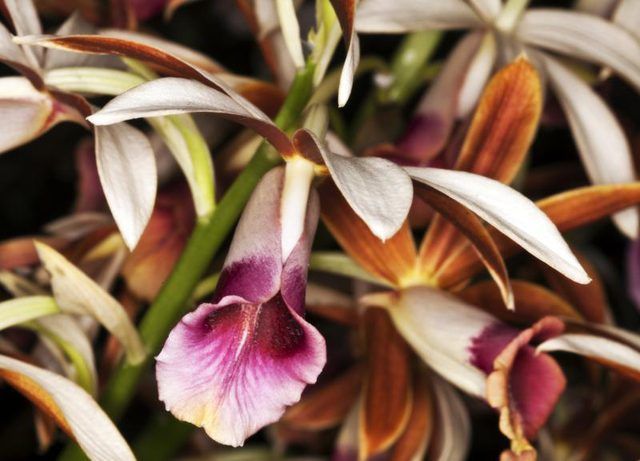Bulbs
Flower Basics
Flower Beds & Specialty Gardens
Flower Garden
Garden Furniture
Garden Gnomes
Garden Seeds
Garden Sheds
Garden Statues
Garden Tools & Supplies
Gardening Basics
Green & Organic
Groundcovers & Vines
Growing Annuals
Growing Basil
Growing Beans
Growing Berries
Growing Blueberries
Growing Cactus
Growing Corn
Growing Cotton
Growing Edibles
Growing Flowers
Growing Garlic
Growing Grapes
Growing Grass
Growing Herbs
Growing Jasmine
Growing Mint
Growing Mushrooms
Orchids
Growing Peanuts
Growing Perennials
Growing Plants
Growing Rosemary
Growing Roses
Growing Strawberries
Growing Sunflowers
Growing Thyme
Growing Tomatoes
Growing Tulips
Growing Vegetables
Herb Basics
Herb Garden
Indoor Growing
Landscaping Basics
Landscaping Patios
Landscaping Plants
Landscaping Shrubs
Landscaping Trees
Landscaping Walks & Pathways
Lawn Basics
Lawn Maintenance
Lawn Mowers
Lawn Ornaments
Lawn Planting
Lawn Tools
Outdoor Growing
Overall Landscape Planning
Pests, Weeds & Problems
Plant Basics
Rock Garden
Rose Garden
Shrubs
Soil
Specialty Gardens
Trees
Vegetable Garden
Yard Maintenance
How to Grow Nun's Orchid
How to Grow Nun's Orchid. Nun's orchid (*Phaius tankervilliae*) is a striking perennial that may grow up to 3 feet tall, producing stalks of fragrant, springtime blooms in shades of silvery brown, yellow and magenta. This adaptable orchid may be easily grown indoors, or outdoors in U.S. Department of Agriculture plant hardiness zones 9 to 11, and...

Nun's orchid (Phaius tankervilliae) is a striking perennial that may grow up to 3 feet tall, producing stalks of fragrant, springtime blooms in shades of silvery brown, yellow and magenta. This adaptable orchid may be easily grown indoors, or outdoors in U.S. Department of Agriculture plant hardiness zones 9 to 11, and offers lower maintenance requirements than many of its finicky relatives.
Indirect Light Is Best
Indoors, nun's orchid should be placed in a location with bright, indirect light. Outdoors, light shade or filtered sunlight is best. A temperature between 60 to 75 degrees Fahrenheit is ideal, though the plant can tolerate brief periods with temperatures as low as 40 degrees F or as high as 95 degrees F. Severe damage will occur below 32 degrees F.
A location with good air circulation is critical to preventing botrytis blight, a fungus disease that causes spots on flowers. Crack a window or turn on a fan to keep air moving.
Use Well-Draining Soil
A terrestrial orchid, nun's orchid should be grown in a well-draining, organic soil mixture. For container plants, mix together equal parts fir bark, osmunda fern and shredded sphagnum moss. You can also use equal parts cow manure, shredded sphagnum moss, potting soil, and fir bark or lava rock. Use a plastic or clay pot with a hole in the bottom for drainage.
Outdoors, use a spade to incorporate equal parts sand or perlite, peat moss, well-rotted compost and partially decomposed pine bark into the soil, so that organic matter makes up 60 to 70 percent of the planting hole.
Fertilize indoor and outdoor orchids every 10 to 20 days during the growing season with 1 teaspoon of a 20-20-20 fertilizer per gallon of water.
Water Regularly
Water regularly throughout the growing season to keep the soil evenly moist, taking care not to wet the foliage or the crown of the plant. Irrigate until water drains out the bottom of the container, and tip the plant gently to remove any water that accumulates in the crown. Use room temperature rainwater if possible, as the thin leaves are sensitive to cold water. Allow the top 2 inches of the soil to become dry when leaves have matured. Reduce watering in the winter when leaves die.
Check for Thrips
Thrips are tiny brown or black sap-sucking insects that feed on buds and new growth, deforming and injuring flowers and foliage. Blooms may develop spots, streaks or discoloration, and leaves may wilt and drop. To check for thrips, carefully blow into a flower and look for scattering insects. Thrips may be controlled with an insecticide containing acephate. Mix 2/3 teaspoon of acephate per 1 gallon of water and use a hand-held sprayer to spray the entire plant, including undersides of leaves, until wet, every two weeks until pests have vanished. Spray outdoors in an area with good air circulation. Do not apply while bees are in the area. Store unused pesticide in a secure location away from children and pets.